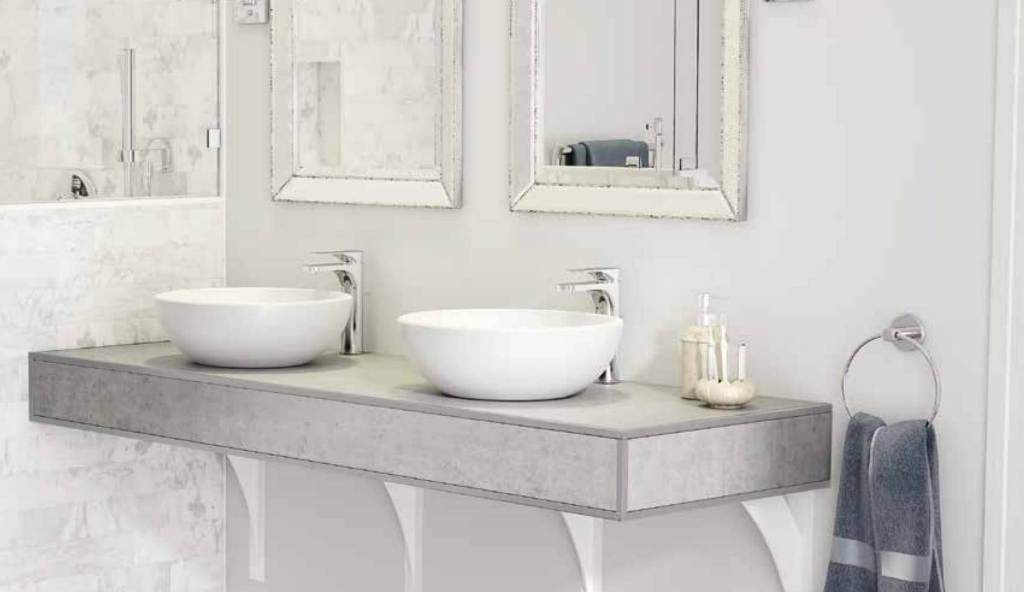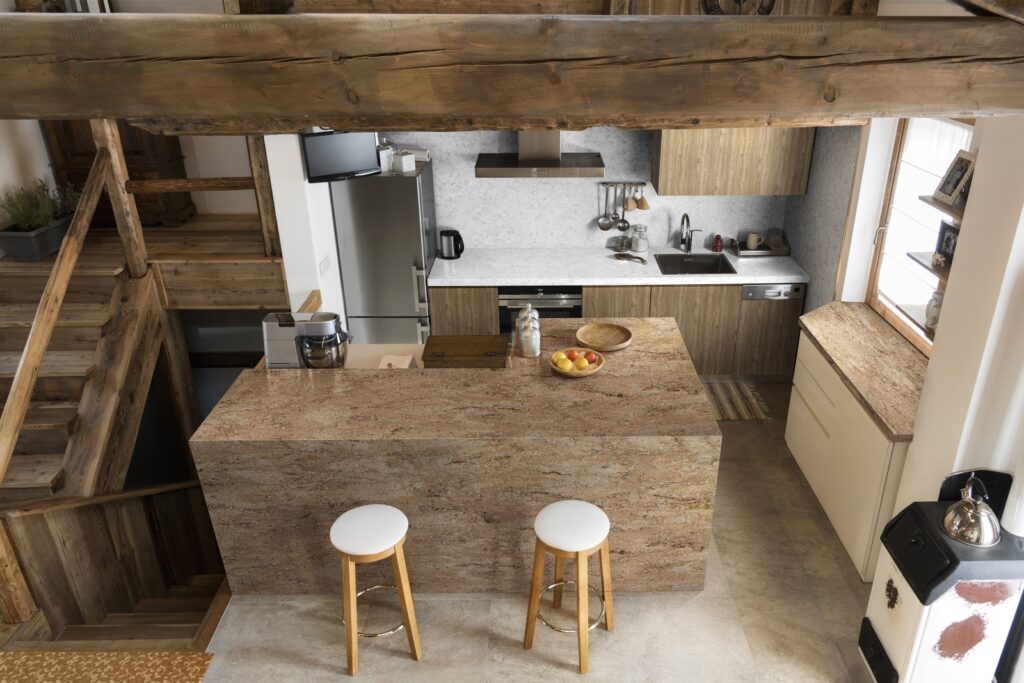Solid surface materials were developed more than 50 years ago to give property owners cost-effective items for many of the surfaces in their homes. Designers use these primarily in the kitchen and bathroom, but their functionality is expanding as designers realize that projects in many spaces can benefit from these.
Because solid surface materials are manufactured options, the possibilities for them are nearly endless. Once you decide on the style, it can be custom made or modified to meet your requirements. Often, the entire item is created from one piece of solid surface material.
Know the benefits
There are several benefits to choosing solid surface materials. One that many homeowners appreciate since they are used primarily in the bathroom and kitchen is that they are nonporous and don’t have surface variations.

These materials don’t provide hiding spaces for bacteria and viruses to thrive. Simply wiping them down with an appropriate cleaner is all it takes to get them cleaned. If the surface is scratched, special sandpaper can remove the scratch without impacting the integrity of the surface.
You don’t have to worry about seams when you use solid surface materials. This gives the space a continuous appearance that can boost the appeal of the room. It is durable and impact resistant. There aren’t weak areas for you to worry about.
For a long time, people thought of this material as being useful only for countertops. The uses these days are almost endless. In every room of your home, you can find ways to use this material to create a fully customized space.
In the kitchen and dining room
Besides the obvious countertops, you can use solid surface materials to create a backsplash around the entire counter area. You might also create an island or a snack bar using it. If you are interested in a fully customized kitchen space, you can use the material to develop stools or benches that complement the rest of the area.
In bathrooms
The bathroom is one area where you don’t want germs to live on surfaces. Solid surface materials in the shower and countertops can help make the room easier to clean. The solid surface shower walls are easy to wipe free of soap scum. You can even choose to have a full sink bowl and countertop combination made as a single unit. Shelving can also use solid surface material.

In playrooms
Playrooms are one area where it is easy to overlook solid surface materials. Because these don’t allow germs to permeate the surface, they are ideal to use in this area. A child is likely going to put toys in their mouth. They might play with things when they aren’t feeling well. Wiping these surfaces and toys off with an antibacterial solution can help to protect the kids that play in these rooms.
In other living spaces
Built-in units and even mobile furniture can utilize solid surface materials. Just like anywhere else in the house, this can help to keep the décor consistent while minimizing the chance that there are hidden germs in the space. Because of the design flexibility of this material, your imagination for every living space in your home is the only limitation you face.
Get your project started

The first step in determining what solid surface materials you should look into is deciding how you want to use them. From there, you can check out the various options that you have so that you can find the ones that will benefit your project. If you are working with a designer, let them know that you want to use this material when possible.
Matt Lee is the owner of the Innovative Construction and Building Materials blog and a content writer for the building materials industry. He is focused on helping fellow homeowners, contractors, and architects discover materials and methods of construction that save money, improve energy efficiency, and increase property value.






